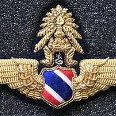FBI was warned in 2005 about Mumbai attacker's terror ties
-
Recently Browsing 0 members
- No registered users viewing this page.
-
Topics
-
-
Popular Contributors
-
-
Latest posts...
-
156
LA Mayor Bass statement on LA ICE roundup of Illegals…
https://accounts.line.me/page/email-verification/c4IVOr04v7EIDj23jwLNLKKbyoTL99i1 -
0
Politics Anutin Refutes Cabinet Shake-up Rumours, Stays as Interior Minister
Anutin Charnvirakul. Picture courtesy of Thai Rath Amid swirling rumours of a cabinet reshuffle, Anutin Charnvirakul has confirmed he will maintain his role as Thailand's Interior Minister. Anutin, also a Deputy Prime Minister and leader of the Bhumjaithai Party, asserts that no talks have occurred about his replacement, dismissing speculation following lobbying from other political factions. There have been whispers of Anutin's position being handed over to a Pheu Thai member after former Prime Minister Thaksin Shinawatra implied the interior ministry's efforts require reassessment. Many interpreted Thaksin's remarks as indicating potential change. Nonetheless, Anutin stands firm, insisting his party's ministers are performing efficiently, and does not anticipate any alterations amid the coalition arrangement established when the former PM Srettha Thavisin took office. Clarifying further, Anutin underscored the stability of his alliance with the current Prime Minister Paetongtarn Shinawatra, saying, "Bhumjaithai did not seek to join the government; Pheu Thai invited us. Our collaboration with two prime ministers has been harmonious." Rebuffing a proposed trade of his position for another cabinet role, he affirmed this arrangement remains intact and crucial to Bhumjaithai. In response to budding reports of a potential meeting involving United Thai Nation (UTN) party members to discuss reshuffling cabinet positions, Anutin categorically denied such claims. He acknowledged meeting UTN leaders Pirapan Salirathavibhaga and Akanat Promphan on 1st June, but clarified that it was to deliberate on energy production challenges, with no ulterior talks about reshuffling cabinets. With Mr Pirapan serving as Energy Minister and Mr Akanat as Industry Minister, Anutin underscored that no renegotiation of agreements has been discussed since July 2023. "We have settled on a deal and anticipate steady governance until our terms are complete in the next two years," he confidently noted. Anutin’s assertions underline a commitment to consistency and continuity within the government coalition, aiming to dispel any brewing uncertainty over Thai political leadership. Adapted by ASEAN Now from Bangkok Post 2025-06-09 -
1
Trump Predicts Positive Outcome as US and China Resume Trade Talks in London
The man’s playing Three Dementia Chess…- 1
-

-
148
The Hero of the Dems is Back in the USA
Based on Trump's comment, not soon enough. -
-
12
THAILAND LIVE Thailand Live Monday 9 June 2025
Thaksin Shinawatra's Perceived Privilege Rocks Thai Government Thaksin Shinawatra //File photo Public support is waning over Thaksin Shinawatra’s prison bypass, rocking the government's foundation, reveals a new poll. The alleged favouritism shown to former PM Thaksin starkly questions the government's longevity, according to fresh data from the National Institute of Development Administration. Full story: https://aseannow.com/topic/1363058-thaksin-shinawatras-perceived-privilege-rocks-thai-government/
-
-
Popular in The Pub




.thumb.jpeg.d2d19a66404642fd9ff62d6262fd153e.jpeg)






Recommended Posts
Create an account or sign in to comment
You need to be a member in order to leave a comment
Create an account
Sign up for a new account in our community. It's easy!
Register a new accountSign in
Already have an account? Sign in here.
Sign In Now